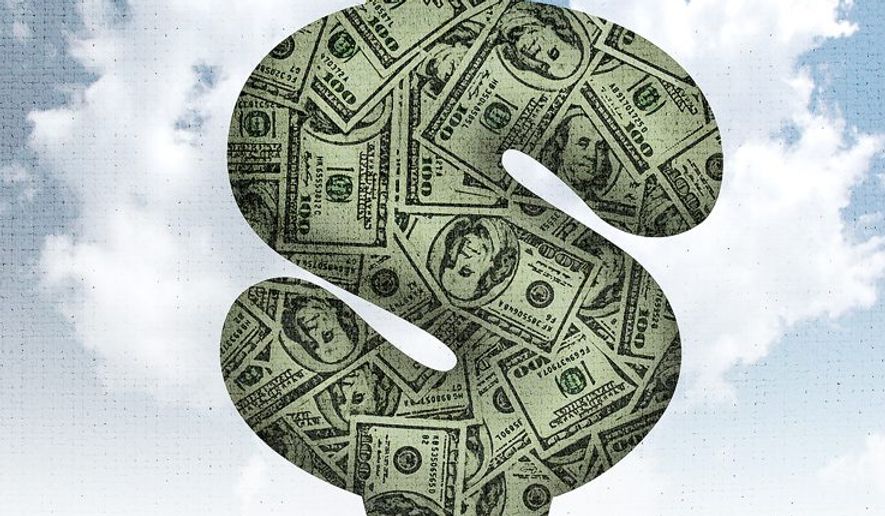OPINION:
Federal Reserve Chairman Jerome Powell recently announced with much fanfare that the Federal Reserve would tolerate periods of inflation above 2% to compensate for failing to reach that target much of the last two decades.
That was meaningless, because the Fed’s role in financing large federal deficits, the dollar’s preeminence in global commerce and the consequent globalization of U.S. securities markets have stripped the central bank of its policymaking clout.
During World War II, the Fed kept interest rates low to enable the Treasury to finance huge deficits. Afterward, the administration continued to pressure the Fed to accommodate its borrowing needs, and inflation hovered around 8% in 1950. The 1951 Treasury-Fed Accord freed the central bank to conduct an independent monetary policy.
Until the 2007-08 financial crisis, the Fed largely implemented policy by buying and selling very short-term government securities to set the federal funds rate — the rate banks charge each other for overnight loans.
Movements in that rate tended to shift rates for the whole range of securities — including the closely watched 10-year Treasury and hinging corporate bonds, mortgages and other consumer loans. What we paid for auto, home and credit card loans — and businesses paid for investment capital — were influenced by market expectations for economic growth and inflation, but the Fed could shift those medium- and long-term rates up or down by adjusting the federal funds rate.
Through the 1970s and ascent of the Organization of the Petroleum Exporting Countries (OPEC), the Fed appeared to worry more about unemployment than stable prices. Inflation moved up and down but gradually ratcheted up to double-digit levels.
Paul Volker, who became chairman in 1979, broke the cycle by sharply pushing up interest rates and unemployment long enough to tame inflation. That recession greatly handicapped Jimmy Carter’s reelection campaign but until the global financial crisis, the federal funds rate, supplemented by sage communications to markets from the chairman, remained the primary tool of policy.
Over the decades, a well-managed currency and strong economic growth made the dollar the dominant currency in commerce worldwide — even when American sales or purchases are not involved. Dollar-denominated assets became the safe haven of choice for foreign portfolio investment.
Foreign official and private long-term holdings of U.S. securities — Treasuries, mortgage-backed securities and corporate bonds and stocks — have grown to $6 trillion and $15 trillion. However, the Fed can influence 10-year Treasuries much less when it tightens monetary policy, because its efforts are overwhelmed by the trading of foreign private investors and central banks.
When Ben Bernanke raised the federal funds rate in 2004-06, longer-term Treasury rates hardly budged, and when the Fed pushed up short rates three times in 2015-17, long rates were similarly stubborn.
The last 20 years have not gone well for the U.S. economy. Presidents Bush, Obama and Trump presided over two long economic expansions that accomplished little more than 2% growth, and those were ended by two great crises.
To dig us out of the recession instigated by the global financial crisis, Mr. Obama resorted to stimulus spending that boosted the federal deficit to record levels — $1.4 trillion in 2009 and $5.1 trillion over four years. The Fed printed dollars and purchased securities totaling $3.6 trillion — effectively monetarizing most of those deficits.
To finance deficits spawned by COVID-19 stimulus spending, the Fed expanded its balance sheet by $2.8 trillion. It has embraced radical measures such as purchasing corporate and municipal bonds and lending directly to private actors, but those have fallen short of expectations. Again, the Fed has monetarized federal deficits by buying Treasuries and mortgage-backed securities and signaled those purchases will continue.
That has pushed the 10-year Treasury rate below 1% since March, but inflation expectations are rising and international investors have started piling into Chinese yuan-denominated bonds, now perceived as safe, to earn higher yields.
Had the Fed not acted, rates on 10-year Treasuries, auto loans and mortgages would have jumped, because there is a limit to the tolerance among international investors to accommodate massive U.S. borrowing.
The lessons from all this are that the Fed can’t raise interest rates when it chooses to combat inflation, it must finance federal deficits and fuel inflation fears during recessions by printing money, and the Chinese yuan is emerging as a genuine rival to the dollar.
Fed monetary policy independence is gone. Massive federal deficits risk debasing the currency and threaten the dollar’s status as the global currency. The Chinese yuan is waiting in the wings.
• Peter Morici, @pmorici1, is an economist and emeritus business professor at the University of Maryland, and a national columnist.




Please read our comment policy before commenting.